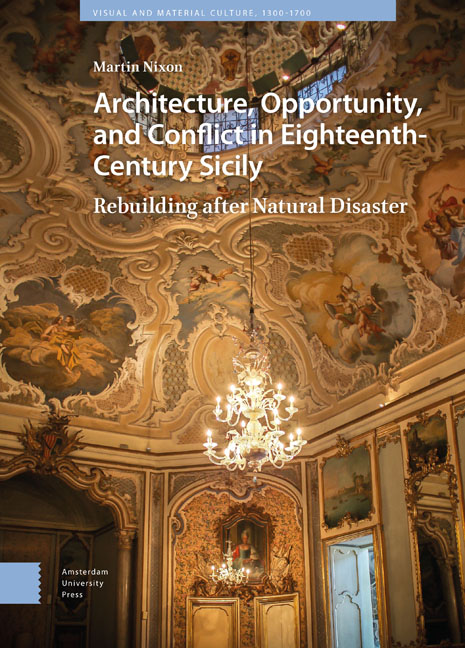 Architecture, Opportunity, and Conflict in Eighteenth-Century Sicily
Architecture, Opportunity, and Conflict in Eighteenth-Century Sicily Published online by Cambridge University Press: 24 November 2023
Abstract: Avola and Grammichele are the only hexagonal towns in Italy and are usually presented in the scholarship in terms of ideal, treatisederived planned cities. This chapter acknowledges the importance of treatises on fortified geometric towns but disputes the recourse to a putative neutral and ideal geometry as generator of architecture. Instead, it argues that after the earthquake, the patrons of Avola and Grammichele implicated geometry in a forceful material and symbolic transformation of their feudal subjects’ environment. The towns are not an exercise in a purportedly rational architecture. Their geometry disembodies the person of the aristocratic rulers and hides their assertion of power behind seemingly neutral and harmonious layouts.
Keywords: Italian architecture, military architecture, geometric towns, territoriality, European urbanism.
The Enigma of Avola and Grammichele
The remarkable towns of Avola and Grammichele are the only two hexagonal towns in Italy (Figs. 2.1 and 2.2). The original hill towns were both completely destroyed in the 1693 earthquake. Avola lost 500 of its population of 6,225, and Occhiolà,, which was renamed Grammichele, lost approximately half of its 2,900 people. The towns were rebuilt—or perhaps it would be more accurate to say that their populations were relocated to completely new towns on lower sites and on flat land that allowed for the geometric street layouts. For the citizens of old Avola, the location they were moved to retained the same name, whereas for the people of Occhiolà, even the name was new. The towns’ hexagonal, post-earthquake sites are just 55km apart in a straight line, and the rebuilding of both towns began at a very similar time, within four months after the earthquake.
Although Avola and Grammichele had different patrons and architects, the similarities in outline, location, and time of building suggest some kind of strong correlation or coordination between the two building projects. However, no evidence has emerged to show any communication between the towns’ patrons and architects. On the question of correlation between these hexagonal projects, this aspect of the towns remains an enigma, but there are also important differences between them, both in terms of their layouts and in how they might be placed within a history of geometric urbanism that began in Europe from the fifteenth century and later spread to European colonies.
To save this book to your Kindle, first ensure [email protected] is added to your Approved Personal Document E-mail List under your Personal Document Settings on the Manage Your Content and Devices page of your Amazon account. Then enter the ‘name’ part of your Kindle email address below. Find out more about saving to your Kindle.
Note you can select to save to either the @free.kindle.com or @kindle.com variations. ‘@free.kindle.com’ emails are free but can only be saved to your device when it is connected to wi-fi. ‘@kindle.com’ emails can be delivered even when you are not connected to wi-fi, but note that service fees apply.
Find out more about the Kindle Personal Document Service.
To save content items to your account, please confirm that you agree to abide by our usage policies. If this is the first time you use this feature, you will be asked to authorise Cambridge Core to connect with your account. Find out more about saving content to Dropbox.
To save content items to your account, please confirm that you agree to abide by our usage policies. If this is the first time you use this feature, you will be asked to authorise Cambridge Core to connect with your account. Find out more about saving content to Google Drive.